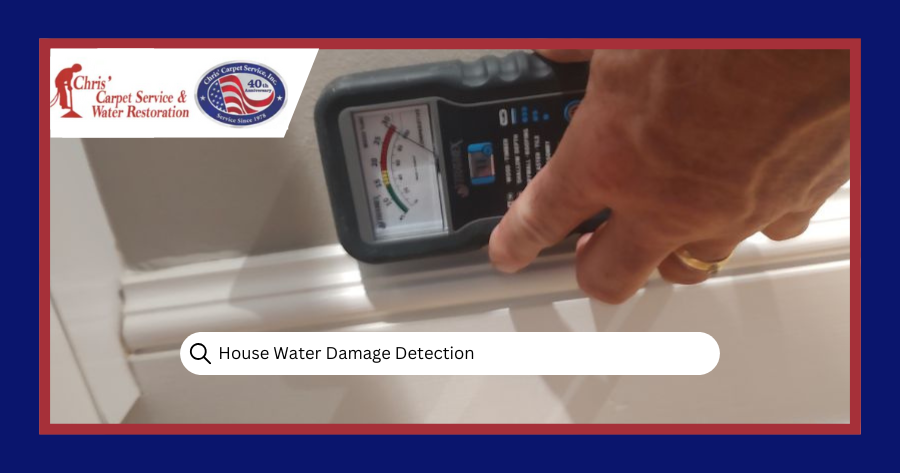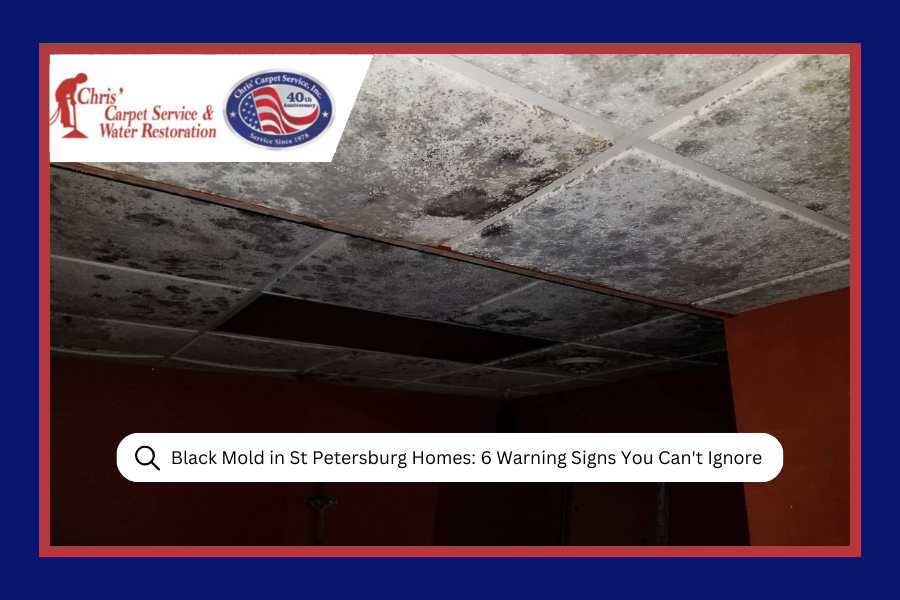House Water Damage Detection: How to Tell if a House Has Had Water Damage
Buying a home is one of the biggest investments you'll ever make, and discovering house water damage after closing can turn your dream home into a financial nightmare. Whether you're a prospective homebuyer, real estate agent, or current homeowner concerned about past issues, knowing how to identify signs of previous house water damage can save you thousands of dollars and countless headaches down the road.
We've been helping Tampa Bay homeowners deal with water damage repair Tampa services since 1976, and we can't tell you how many times we've gotten calls from new homeowners who discovered hidden water damage weeks or months after moving in. The good news is that water damage rarely stays completely hidden. If you know what to look for, you can spot the telltale signs before they become your problem.
Visual Signs of Previous House Water Damage
Understanding what previous house water damage looks like is crucial for protecting your investment. Over our nearly 50 years in the water restoration business, we've identified several recurring visual indicators that consistently reveal past water intrusion in Tampa Bay area homes.
Water Stains and Discoloration
One of the most obvious signs of past water damage is discoloration on walls, ceilings, or floors. These stains often appear as brown, yellow, or rust-colored rings or patches. Even if the area has been repainted, water stains frequently bleed through new paint over time. Pay special attention to areas around windows, doors, and plumbing fixtures where leaks commonly occur.
Warped or Buckled Flooring
Water and flooring don't mix well, and the evidence usually lingers long after the water is gone. Hardwood floors may show cupping, crowning, or gaps between planks. Laminate flooring might have lifted edges or a spongy feel underfoot. Even tile floors can reveal past water issues through loose or cracked tiles and deteriorated grout lines.
Peeling or Bubbling Paint and Wallpaper
When water gets behind wall surfaces, it causes paint to lose adhesion and wallpaper to separate from the wall. Look for areas where paint is peeling, bubbling, or has a different texture than the surrounding areas. Fresh paint over these problems is often a red flag that someone tried to cover up water damage rather than properly address it.
Sagging or Damaged Drywall
Water-damaged drywall often develops a soft, spongy texture or visible sagging. You might notice nail pops, cracks, or areas where the drywall surface appears different from the rest of the wall. Just like how leaking pipes can destroy your home, hidden moisture can compromise structural integrity over time.
Detecting Hidden Moisture and Structural Issues
Not all house water damage is immediately visible to the naked eye. Some of the most serious problems hide behind walls, under floors, or in areas you might not think to check regularly:
- Musty Odors That Won't Go Away: Your nose is often your best tool for detecting past water problems. Persistent musty, earthy, or stale odors usually indicate ongoing moisture issues or mold growth, even if you can't see visible signs. These odors are particularly noticeable in basements, crawl spaces, and areas with poor ventilation.
- Mold and Mildew Growth: Visible mold growth is a clear indicator of current or past moisture problems. Check behind furniture, in closets, around windows, and in bathrooms for black, green, or white fuzzy growth. Remember that mold can grow within 24-48 hours of water exposure, so its presence suggests recent or ongoing moisture issues.
- Foundation and Structural Concerns: Water damage doesn't just affect surfaces; it can compromise your home's structural integrity. Look for cracks in the foundation, especially horizontal cracks or those with mineral deposits (efflorescence). Check for signs that appliance malfunctions caused water damage, such as rust stains around water heaters or washing machine areas.
- Electrical and Plumbing Red Flags: Water and electricity don't mix safely. Look for rust or corrosion around electrical outlets, switches, or panels. Check plumbing fixtures for signs of leaks, rust stains, or mineral buildup. Problems with leaking pipes can destroy your home, and issues like water damage from leaky toilets often leave lasting evidence.
Areas to Pay Special Attention To
Certain areas of your home are more prone to house water damage than others, making them critical inspection points during any property evaluation.
- Bathroom and Kitchen Inspections: These rooms see the most water use and are prime locations for household water damage. Check around sinks, tubs, showers, and toilets for soft flooring, loose tiles, or gaps in caulking. Look under sinks for signs of leaks under the bathroom sink or kitchen sink leaking situations that may have occurred in the past.
- Windows and Doors: Water intrusion around windows and doors is extremely common, especially during Florida's rainy season. Check for water stains, peeling paint, or soft wood around window frames and door jambs.
- Appliance Areas: Don't forget to examine areas around major appliances. Water heaters, washing machines, and dishwashers are common sources of leaks
What Should I Do If I Suspect A House Has Had Water Damage?
If you're in the middle of a home purchase and discover signs of possible water damage, don't panic, but do take action. First, document everything with photos and notes. If you're working with a real estate agent, inform them immediately. Consider hiring a professional inspector who specializes in moisture detection. They have tools like moisture meters and thermal imaging cameras that can reveal hidden problems.
For current homeowners who discover signs of past water damage, it's important to determine whether the issue is truly resolved or if there are ongoing moisture problems that need attention. Sometimes what appears to be old damage is actually an active leak that's been going on for months or years.
How Chris' Carpet Service & Water Restoration Can Help
If you think a home has had house water damage in the past, don't let uncertainty put your investment at risk. Call us at Chris' Carpet Service & Water Restoration to discuss how we can help with comprehensive water damage repair services and mold restoration in the Tampa Bay area.
Our IICRC-certified team has the expertise and professional-grade equipment to conduct thorough moisture assessments and identify hidden water damage that might not be visible to the untrained eye. We use advanced moisture detection tools, thermal imaging, and air quality testing to give you a complete picture of a property's condition.
Whether you're a prospective buyer who needs peace of mind or a current homeowner dealing with discovered damage, we provide honest assessments and effective solutions.
Protect Your Investment Today
House water damage doesn't have to derail your home buying plans or compromise your current property value. With the right knowledge and professional support, you can identify potential problems before they become expensive surprises.
Remember, catching water damage early, whether it's from the past or currently developing, is always more cost-effective than dealing with extensive structural repairs and mold remediation later. If you discover any signs of water damage or just want professional peace of mind, don't hesitate to call us at (727) 888-5111. You can also fill out an online form on our website for immediate assistance with water damage assessment and restoration services.







